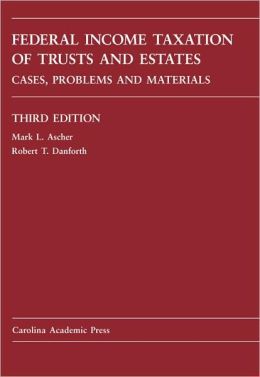
Title: Federal Income Taxation of Trusts and Estates: Cases, Problems, and Materials / Edition 3
Author: Mark L. Ascher, Robert T. Danforth
ISBN-10: 1594605645
ISBN-13: 9781594605642
Federal Income Taxation of Trusts and Estates: Cases, Problems, and Materials examines the income taxation of estates and trusts, estate and trust beneficiaries, and trust settlors; its emphasis is on the provisions of ‘Subchapter J’; the relevant portion of the Internal Revenue Code (sections 641 through 692) and its first priority is to give readers an understanding of those provisions and how they work. The book takes four distinct, but integrated, approaches. At the beginning of each section, Ascher and Danforth present assignments of carefully selected provisions of the Internal Revenue Code and Treasury Regulations. Following are one or more precedents (cases or rulings) dealing with the topic at hand, accompanied by textual material that amplifies the topic by further analysis of the primary precedents, presentation of other precedents, or discussion of subsequent developments. Finally, numerous problems, where appropriate, allow the reader to apply the material to common fact patterns. The third edition brings the book completely up to date, and includes all relevant developments since the preparation of the second edition. Among the many important additions are the decision of the United States Supreme Court in Knight v. Commissioner, which just this year held that investment advisory fees paid by a trustee are subject to the 2% haircut under section 67; Mattie K. Carter Trust v. United States, in which the United States District Court for the Northern District of Texas held that it is not merely the activities of the trustee, but also those of the trustee s employees, that count toward the material participation requirement under the passive activity rules of section 469; and full incorporation of the trust accounting income regulations recently finalized by the Treasury. The third edition includes a number of new or revised problems, and it trims some materials relating to estate planning techniques that are now obsolete.

